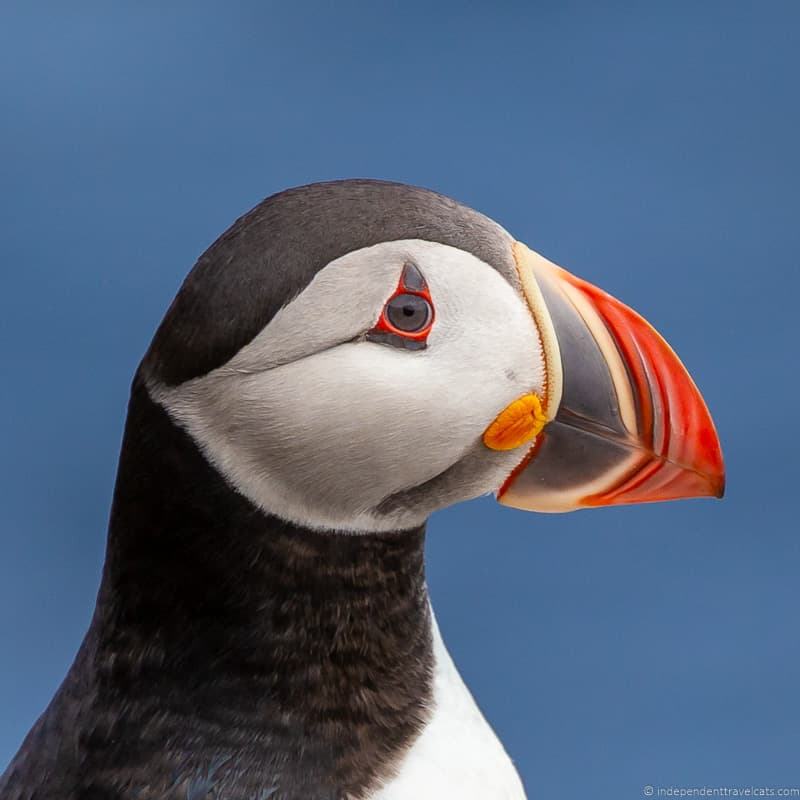
On rare occasions, the Atlantic puffin becomes entangled in fishing nets and drowns. However, it faces two serious threats - oil pollution in the form of deadly surface slicks and the overfishing of its food supply by large, commercial fishing fleets. CONSERVATIONĪlthough some of the Atlantic puffin’s colonies, which normally number in the thousands, have declined in size during the 20th century, it remains an abundant species. But in the Arctic, frozen ground prevents it from digging burrows, so it must resort to crevices in the cliff faces. The puffin shares nesting cliffs with other birds of its family Alcidae, but doesn’t compete with them for nest sites as it’s the only one to use burrows high on the cliff. But in late summer, puffins drift south away from their colonies, which are deserted by September From fall until early spring, they stray far out to deeper offshore waters as far south as New Jersey the western coast of Italy and the Canary Islands. It occurs on inshore waters from the North Atlantic and North Sea north as far as the High Arctic. The Atlantic puffin spends most of its life at sea, coming to land only to breed in clifftop or island colonies. HABITATĪ Island break Puffins breed on rocky, wind-blown coastal islands. Delta, B.C.The Atlantic puffin may seem irresistibly comic with its waddling walk and colorful, oversized bill, but it’s an efficient predator of fish even in rough seas. The Atlas of the Breeding Birds of British Columbia, 2008-2012. Relative to most other auks, a relatively high proportion (37%) of individual Horned Puffins had plastic particles in stomachs in Alaskan waters in the late 1980s ( Robards et al. Throughout its range, the Horned Puffin is potentially vulnerable to human disturbance, oiling at sea, fisheries operations, and introduced predators especially rats ( Rattus species) and Raccoons ( Procyon lotor) which have decimated some British Columbia seabird colonies. There are just 3 island groups designated as Important Bird Areas in British Columbia that support breeding Horned Puffins ( IBA Canada 2015).įor nesting, the Horned Puffin uses crevices in talus slopes, on cliffs (as at Triangle Island), and amid beach boulders, on remote, rocky islands. Breeding colonies throughout the species' range are generally located on remote islands that are unlikely to have human visitors. This is a rare species at any time in the temperate waters off the British Columbia coast.

James and the Kerouard Islands, both at the south end of the Haida Gwaii archipelago, and Triangle Island where appreciable numbers (tens) occur in all years in suitable nesting habitat and are regularly seen delivering fish to probable nests (rock crevices high up on steep cliffs). During the Atlas years, breeding evidence was obtained at three sites: Cape St. There is only one confirmed British Columbia breeding record for Horned Puffin, at S'Gang Gwaay, off the southwest corner of Haida Gwaii, although small numbers probably have bred at several other sites along the coast ( Campbell et al. It is a generalist feeder that forages mainly in deep oceanic waters far from shore and nests in rock crevices on remote islands ( Piatt and Kitaysky 2002). Like all puffins, the Horned Puffin is striking and unmistakable.

It spends the winter in deep waters of the central North Pacific. Widely distributed in subarctic and North Pacific Ocean waters off the coasts of Alaska and eastern Asia, the Horned Puffin reaches the southern limits of its breeding range in British Columbia ( Piatt and Kitaysky 2002). Mean abundance by habitat Boreal Altai Fescue Alpine


 0 kommentar(er)
0 kommentar(er)
